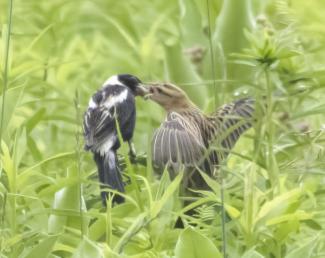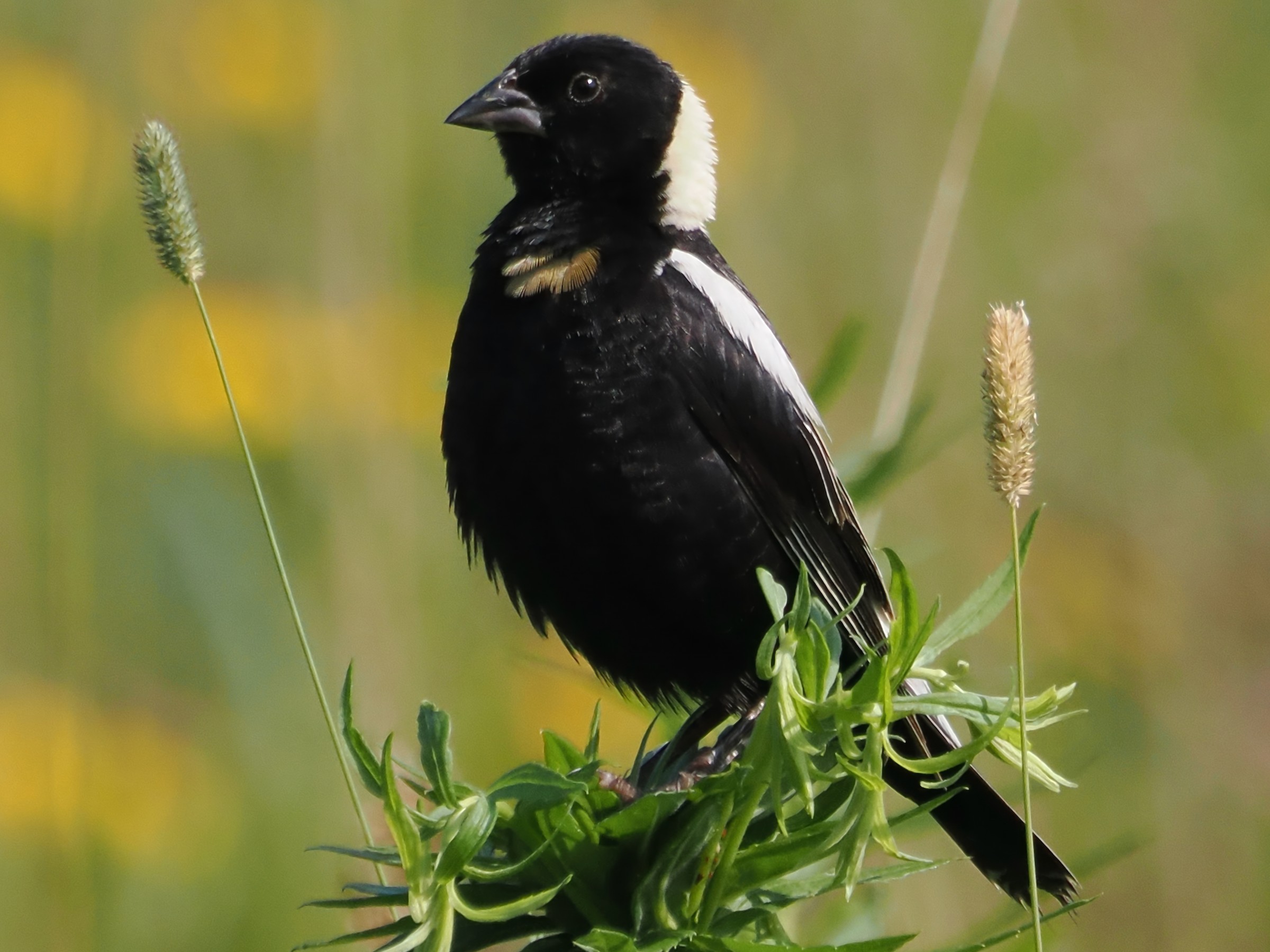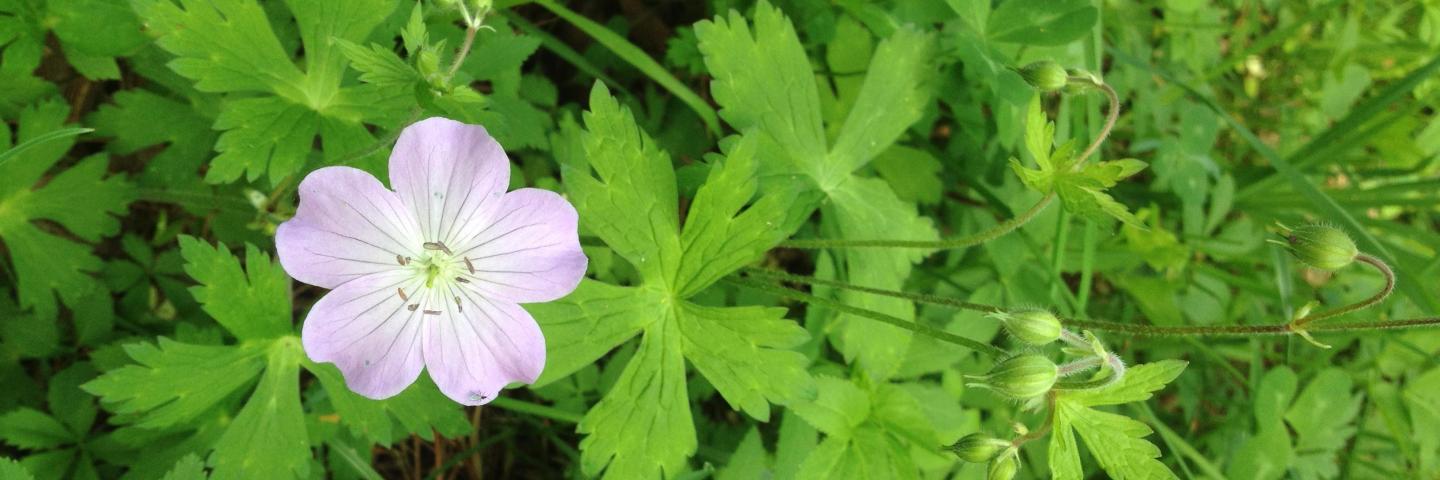Bobolinks! Citizen Science at the McAllister WildLife Refuge
Christine Ward, Great Barrington Land Conservancy / Christine@GBLand.org
You can sign on as a volunteer monitor.
A loquacious community of ground nesting birds are building in population at the Town of Great Barrington's McAllister Wildlife Refuge. A collaboration between the Conservation Commission, Great Barrington Land Conservancy, and the Hoffmann Bird Club will bring a greater awareness of bobolinks and of their significance in the Berkshires with a program at the McAllister Wildlife Refuge. Community help is needed!

This charismatic bird species can help connect our community to the significance of caring for wildlife habitat. Bobolinks are present in the fields at McAllister from early May through at least mid-August. They build nests and lay eggs on the ground in fields and can be easily disturbed. It is important to keep people and dogs well out of the nesting areas.
LEARN MORE AND/OR SIGN UP TO BE A BOBOLINK MONITOR: You can join us to attend a Guided Bobolink Walk at the McAllister Wildlife and/oR sign on as a volunteer monitor to help collect data each year that will track Bobolink nesting successes at the McAllister Wildlife refuge. This data will help inform our understanding of bobolinks throughout Berkshire County.
Bobolinks are blackbirds that breed successfully only in grasslands. They are a bird species of concern due to historic changes in land-use practices that have resulted in a lack of breeding habitat. Intensive invasive management and habitat-friendly haying practices at the McAllister Wildlife Refuge have succeeded in helping bobolinks to have greater breeding success. Recent improvements at the McAllister Wildlife Refuge have had a positive impact on the ability for bobolinks to successfully nest and reproduce.
Invasive management and habit-friendly haying practices at the McAllister Wildlife Refuge have succeeded in helping bobolinks to have greater breeding success. It is exciting to experience the return of mating pairs of bobolinks each May. “Perched on a grass stem or displaying in flight over a field, breeding male Bobolinks are striking. No other North American bird has a white back and black underparts (some have described this look as wearing a tuxedo backwards). Added to this are the male’s rich, straw-colored patch on the head and his bubbling, virtuosic song.” The female is “Pretty and quiet, with plain brown wings” and “Broods in the grass while her husband sings: Bob-o’-link, bob-o’-link Spink, spank, spink!” (an excerpt from a Poem by William Cullen Bryant).
It is exciting to experience the return of mating pairs of bobolinks each May. “Perched on a grass stem or displaying in flight over a field, breeding male Bobolinks are striking. No other North American bird has a white back and black underparts (some have described this look as wearing a tuxedo backwards). Added to this are the male’s rich, straw-colored patch on the head and his bubbling, virtuosic song.” The female is “Pretty and quiet, with plain brown wings” and “Broods in the grass while her husband sings: Bob-o’-link, bob-o’-link Spink, spank, spink!” (an excerpt from a Poem by William Cullen Bryant).
In an effort to protect and improve our county-wide monitoring of bobolinks, John Felton, member of the Hoffmann Bird Club and nature photographer, has developed informative and interactive signage used by the towns of Lenox and Lee at the Edith Wharton Preserve located on the western edge of Laurel Lake. The Great Barrington Conservation Commission has approved and funded new informational signage for the McAllister Wildlife Refuge to help create greater awareness about the need to protect nesting areas.


